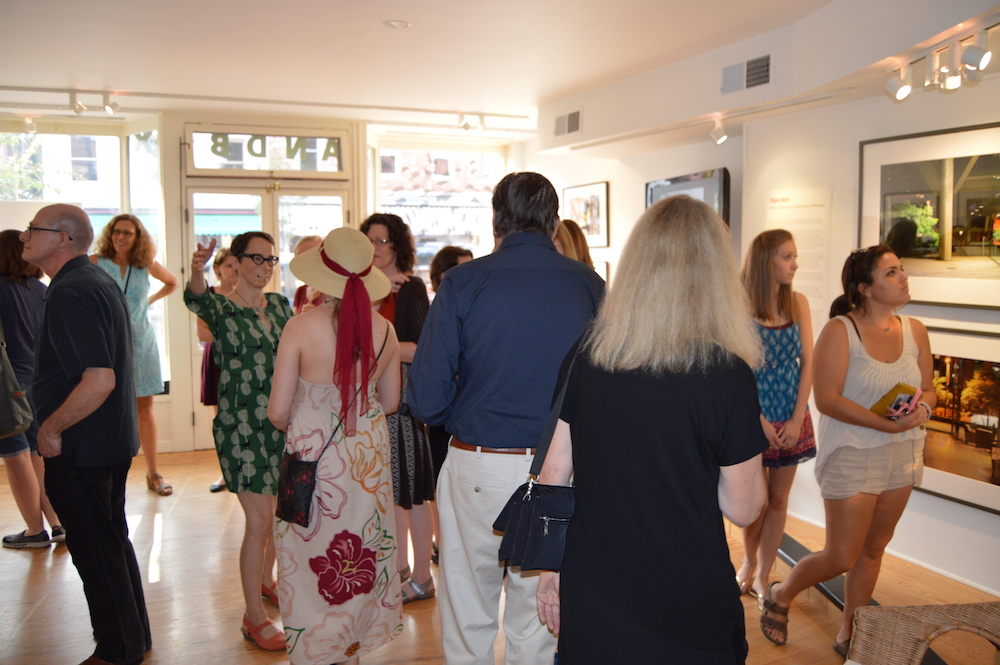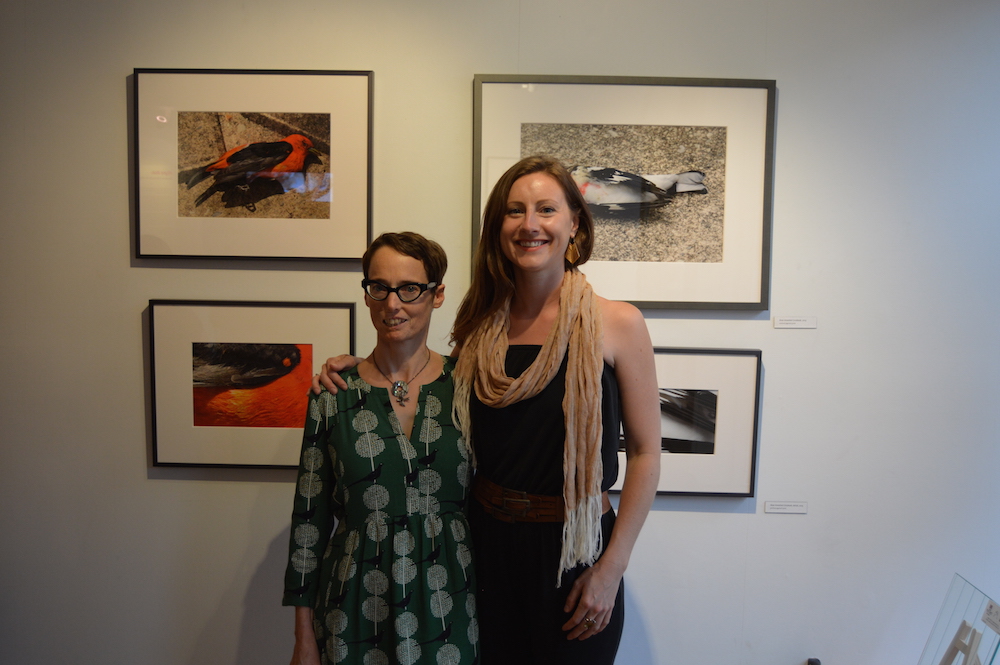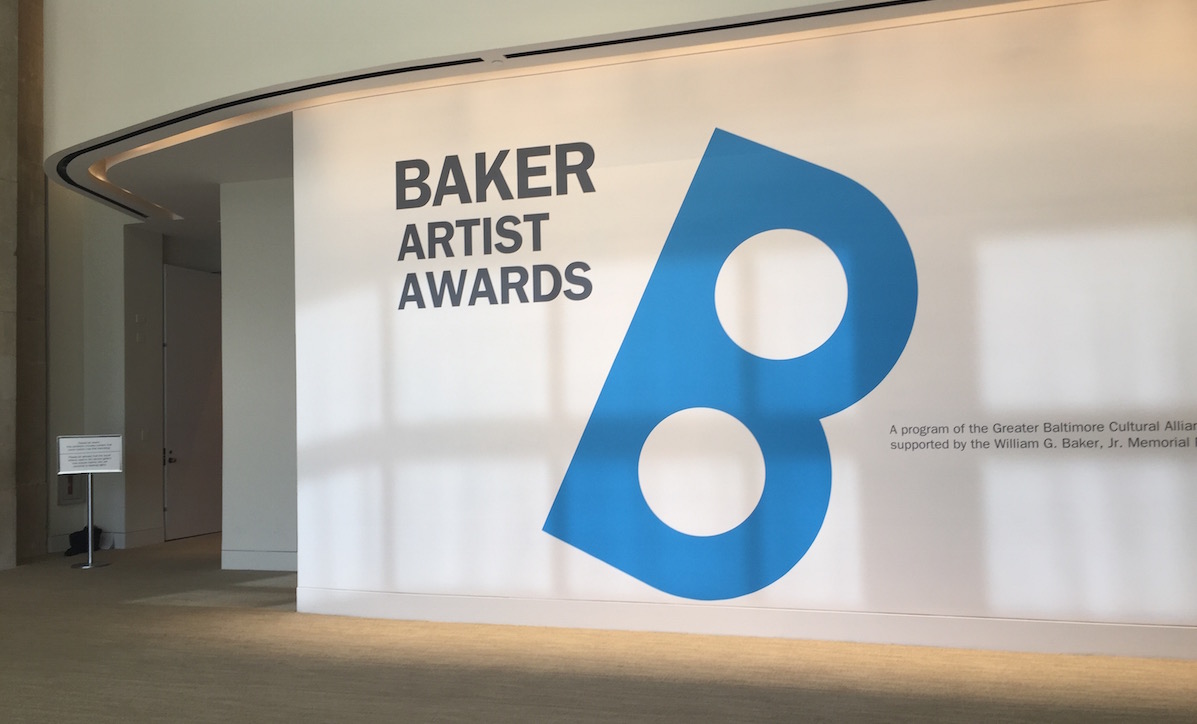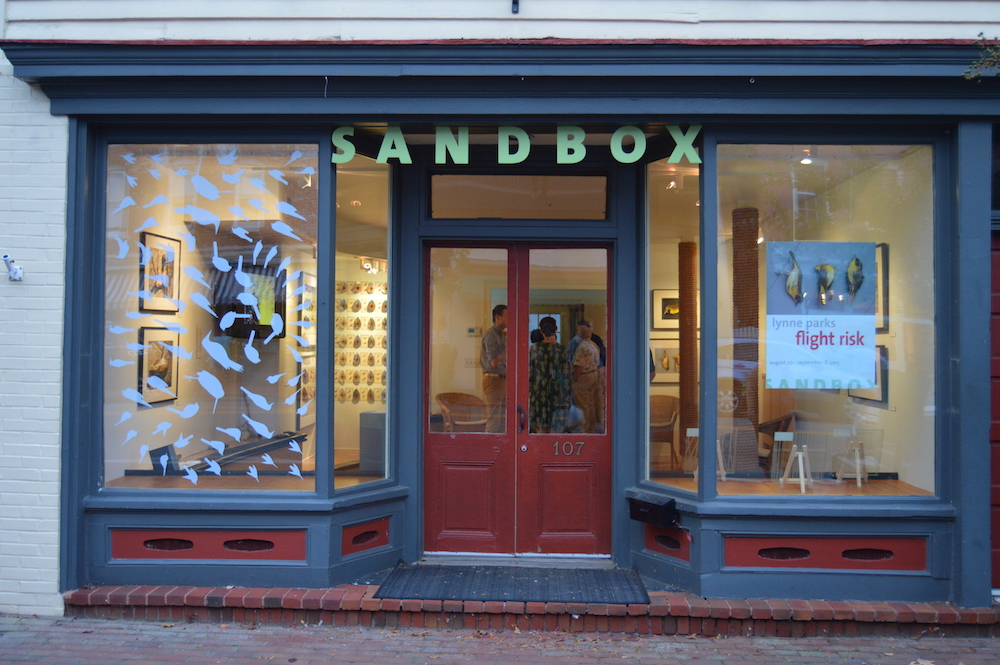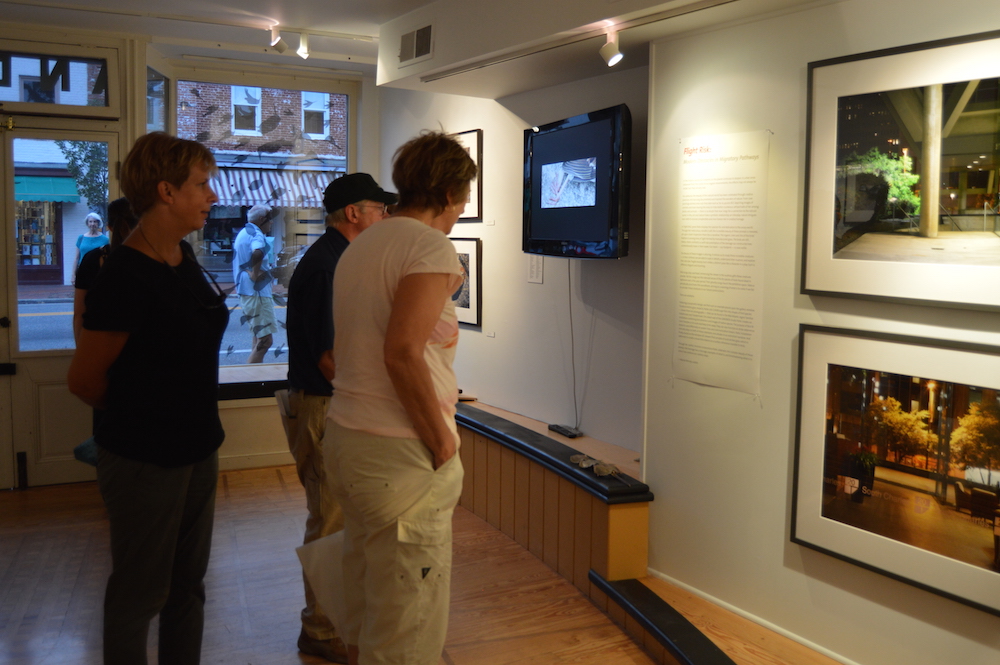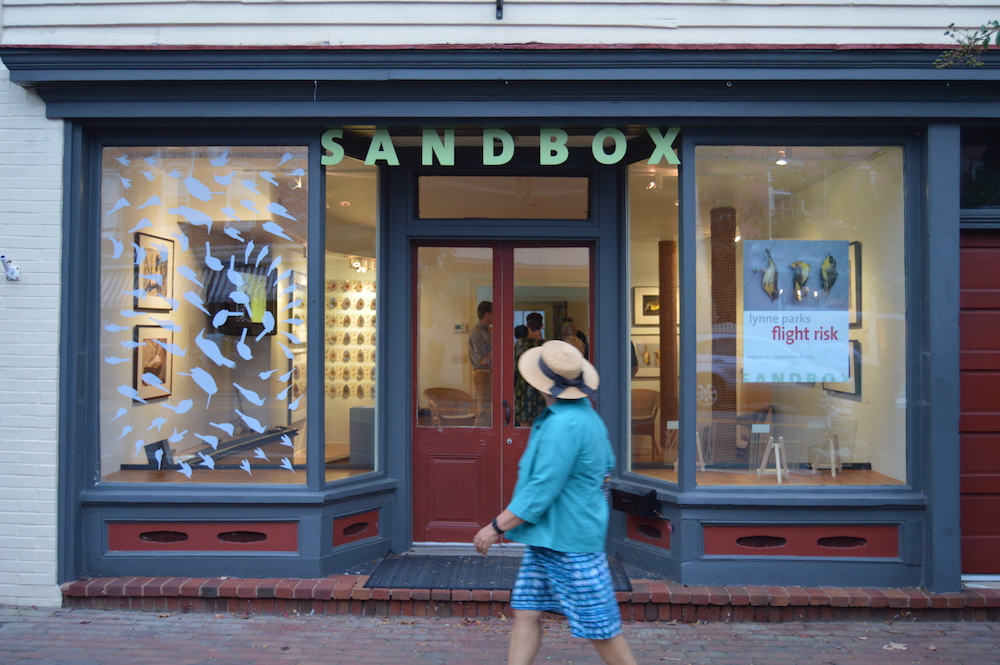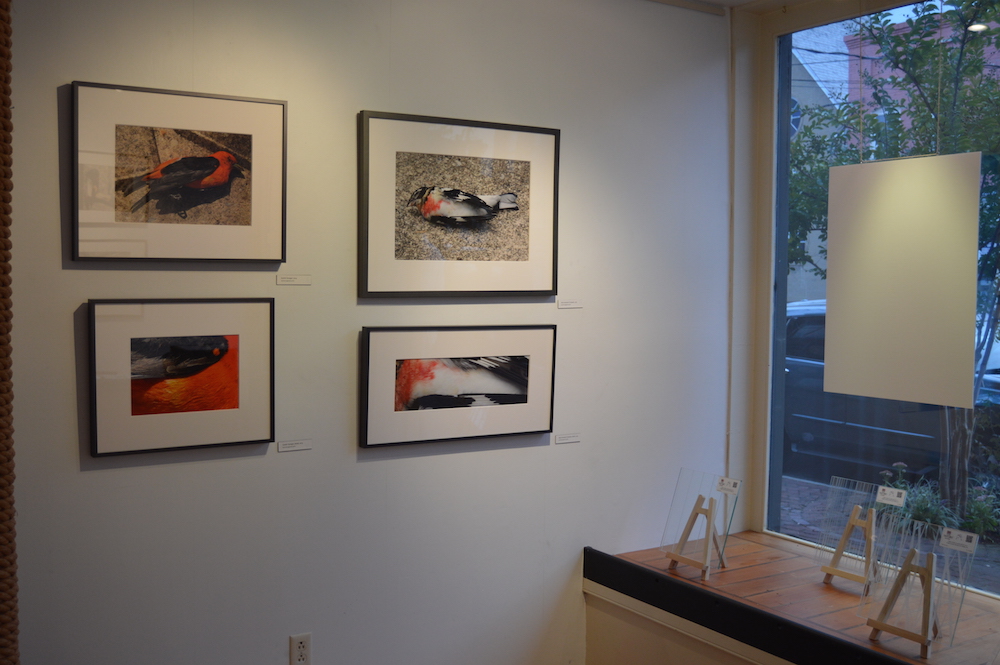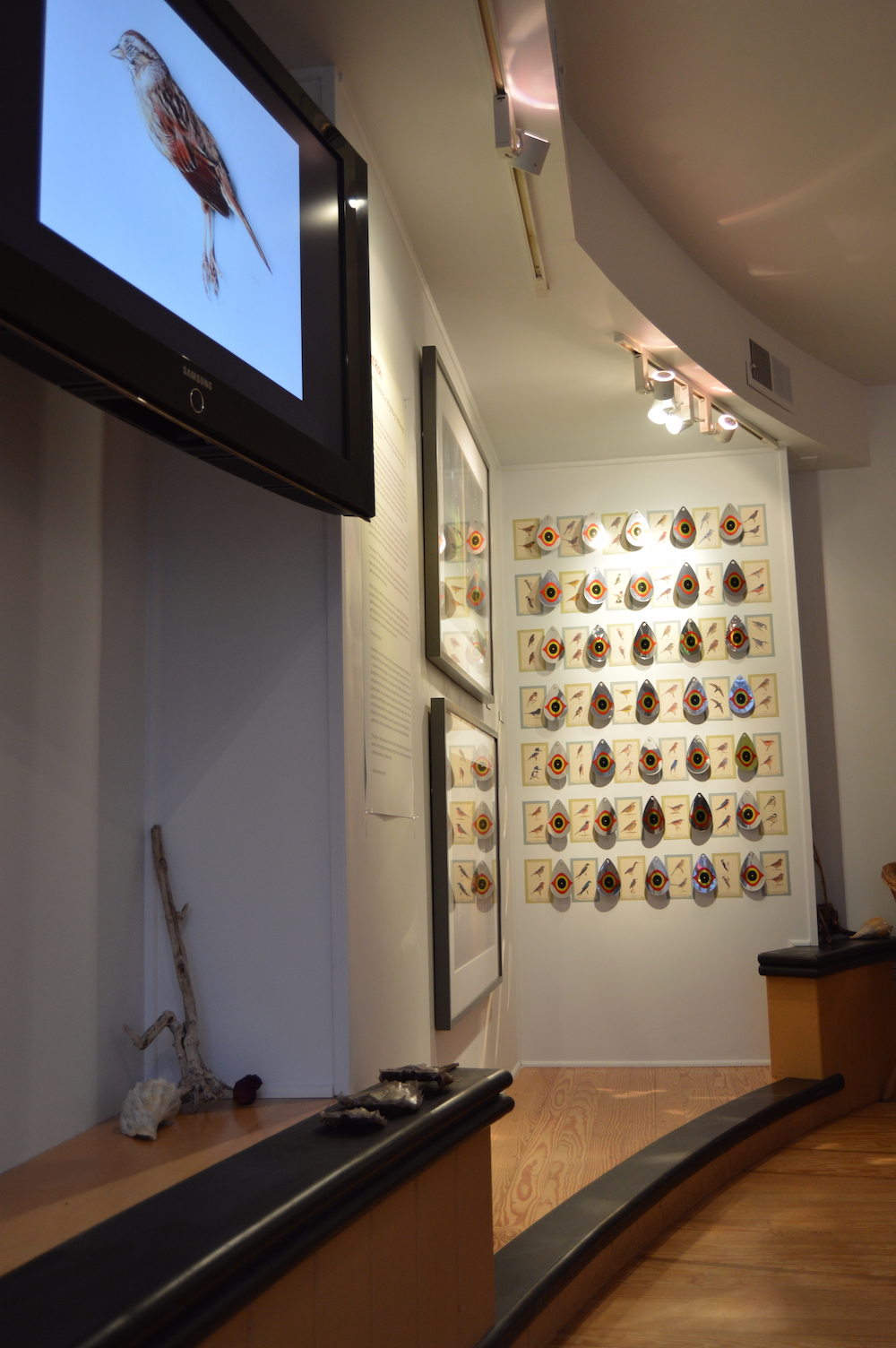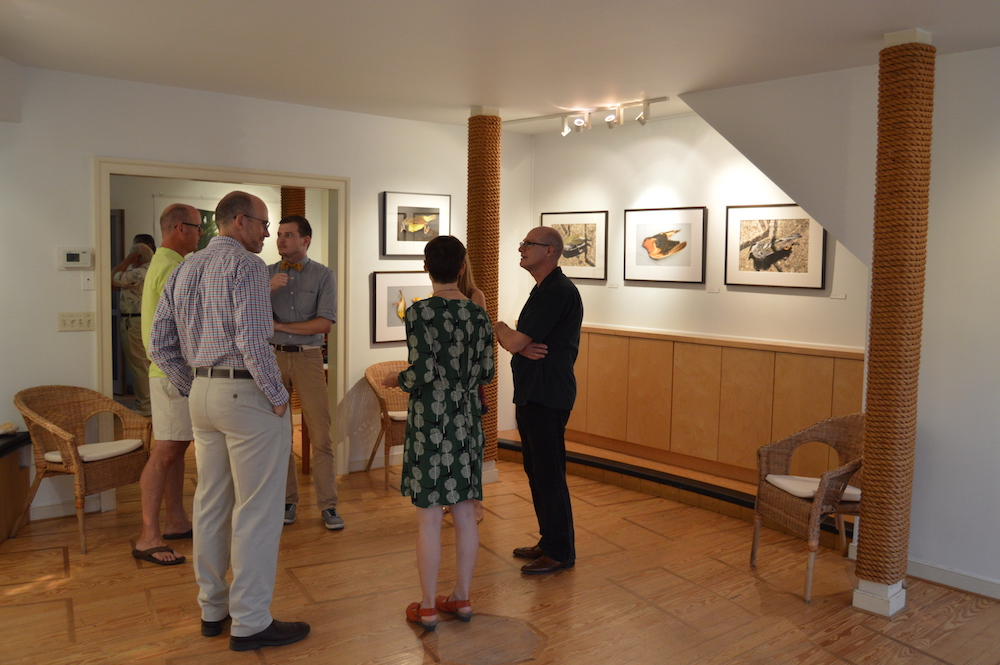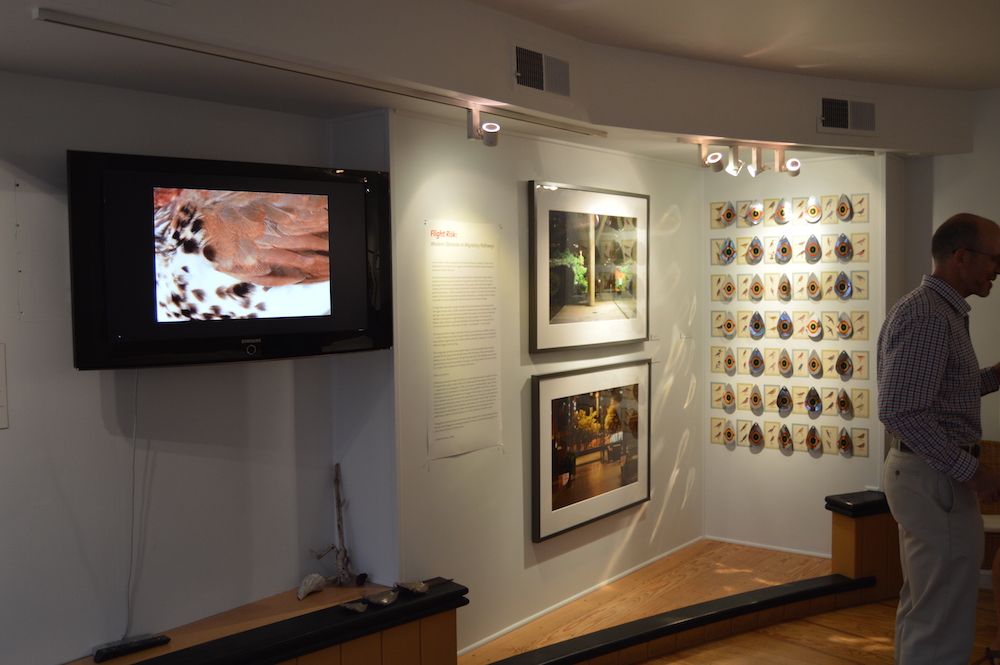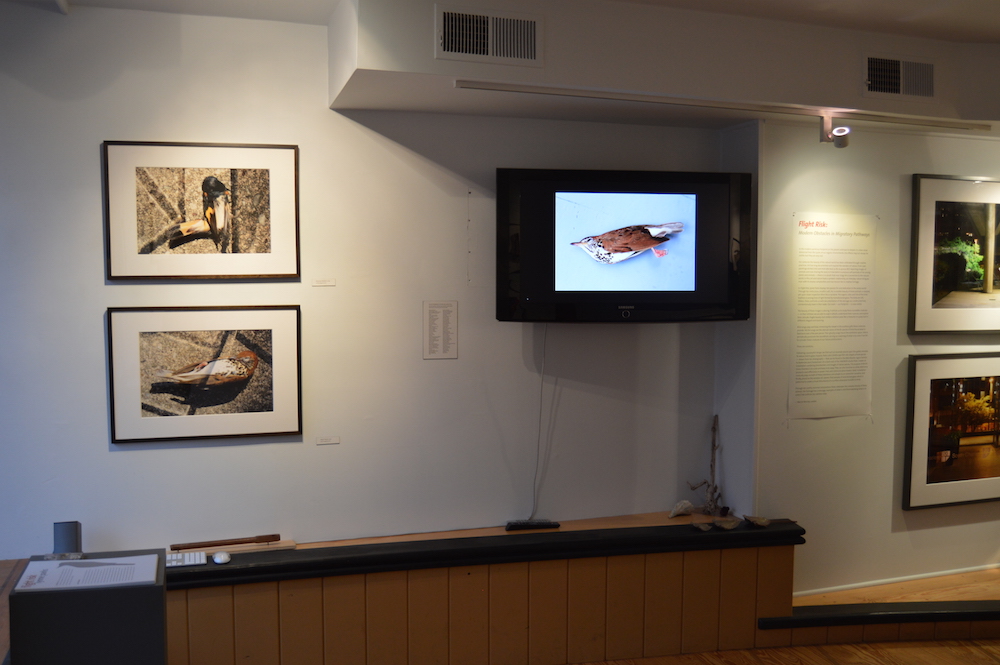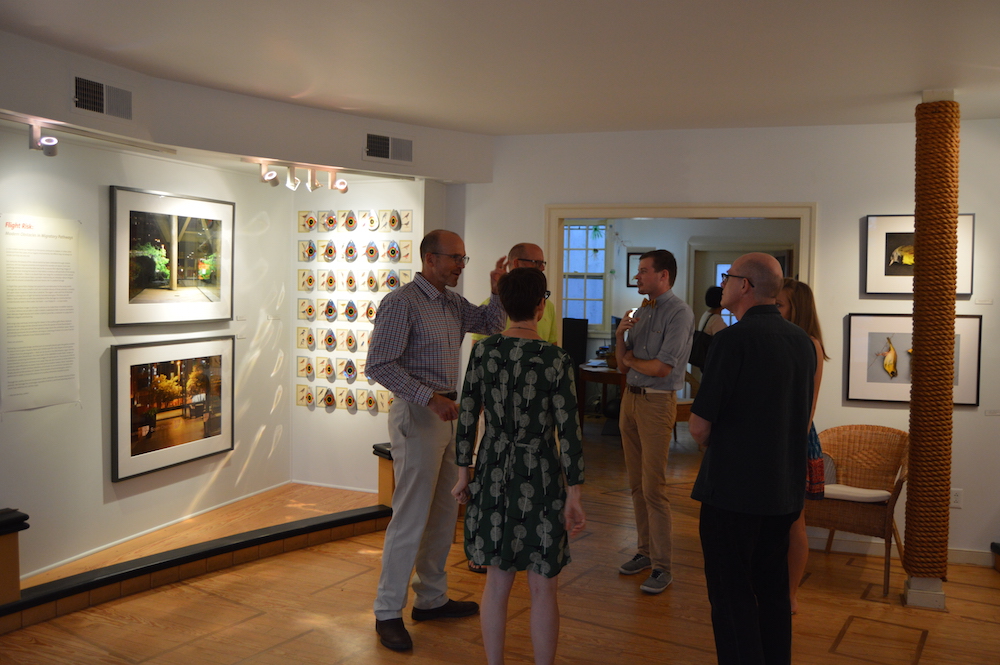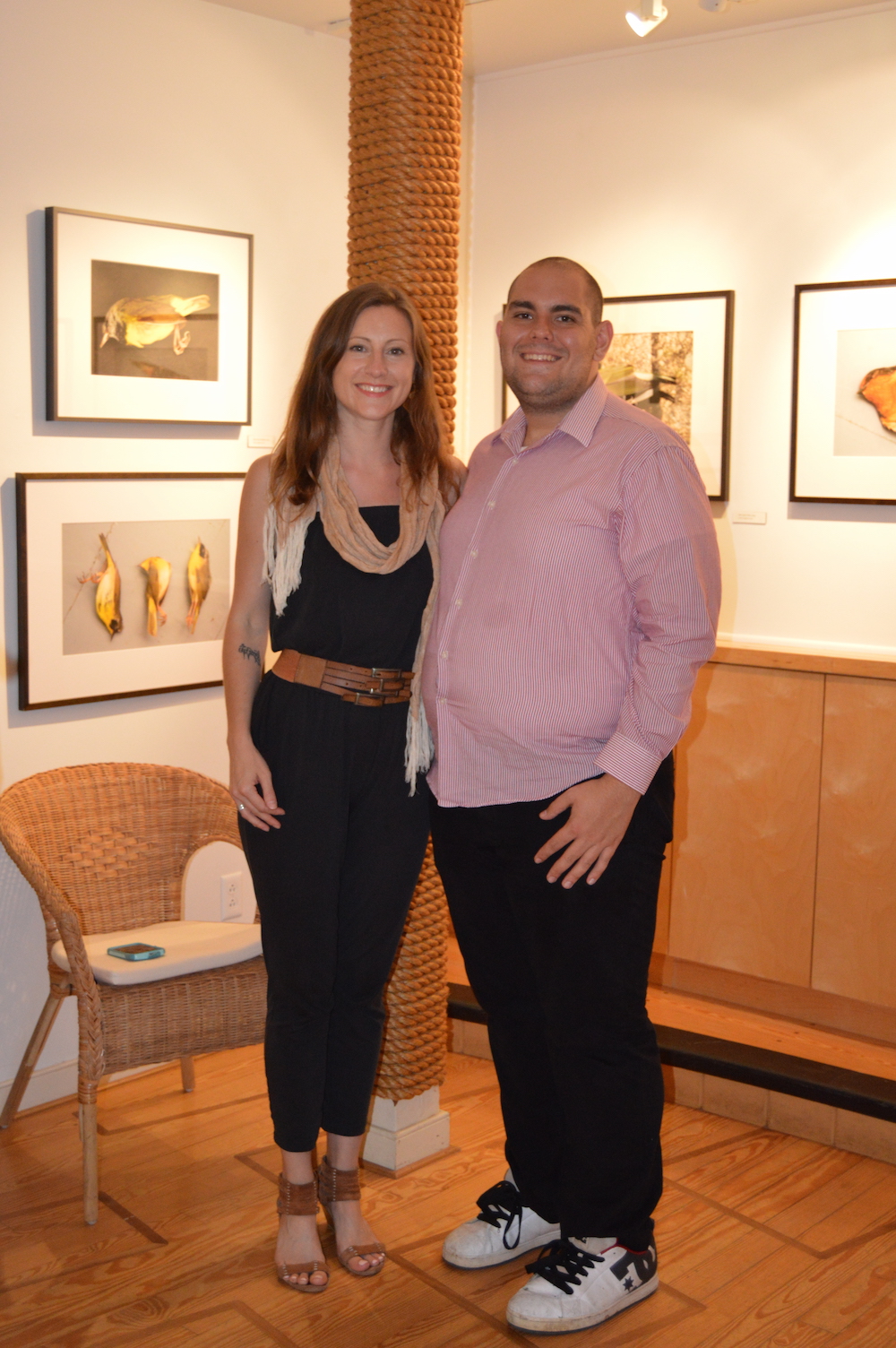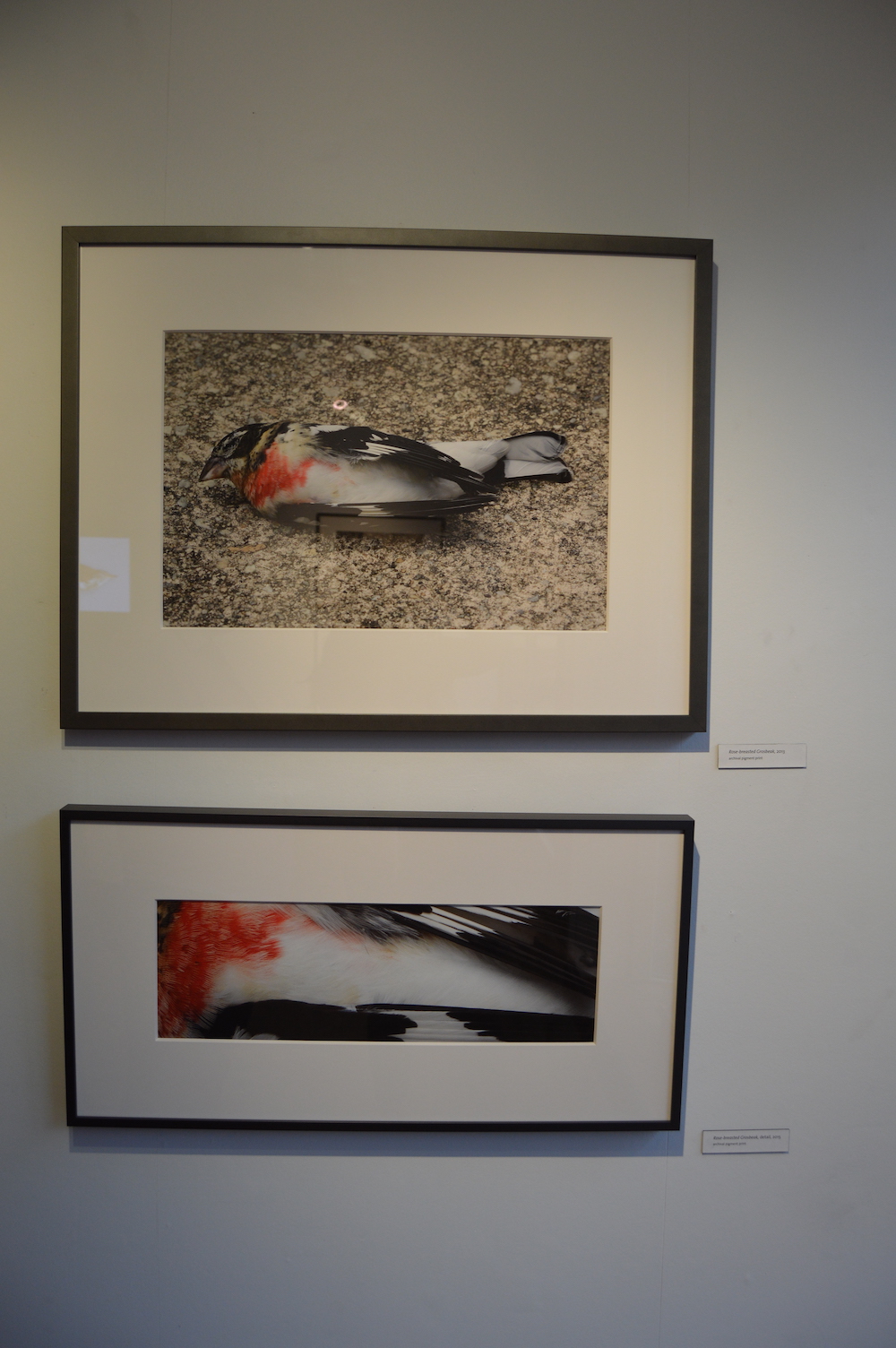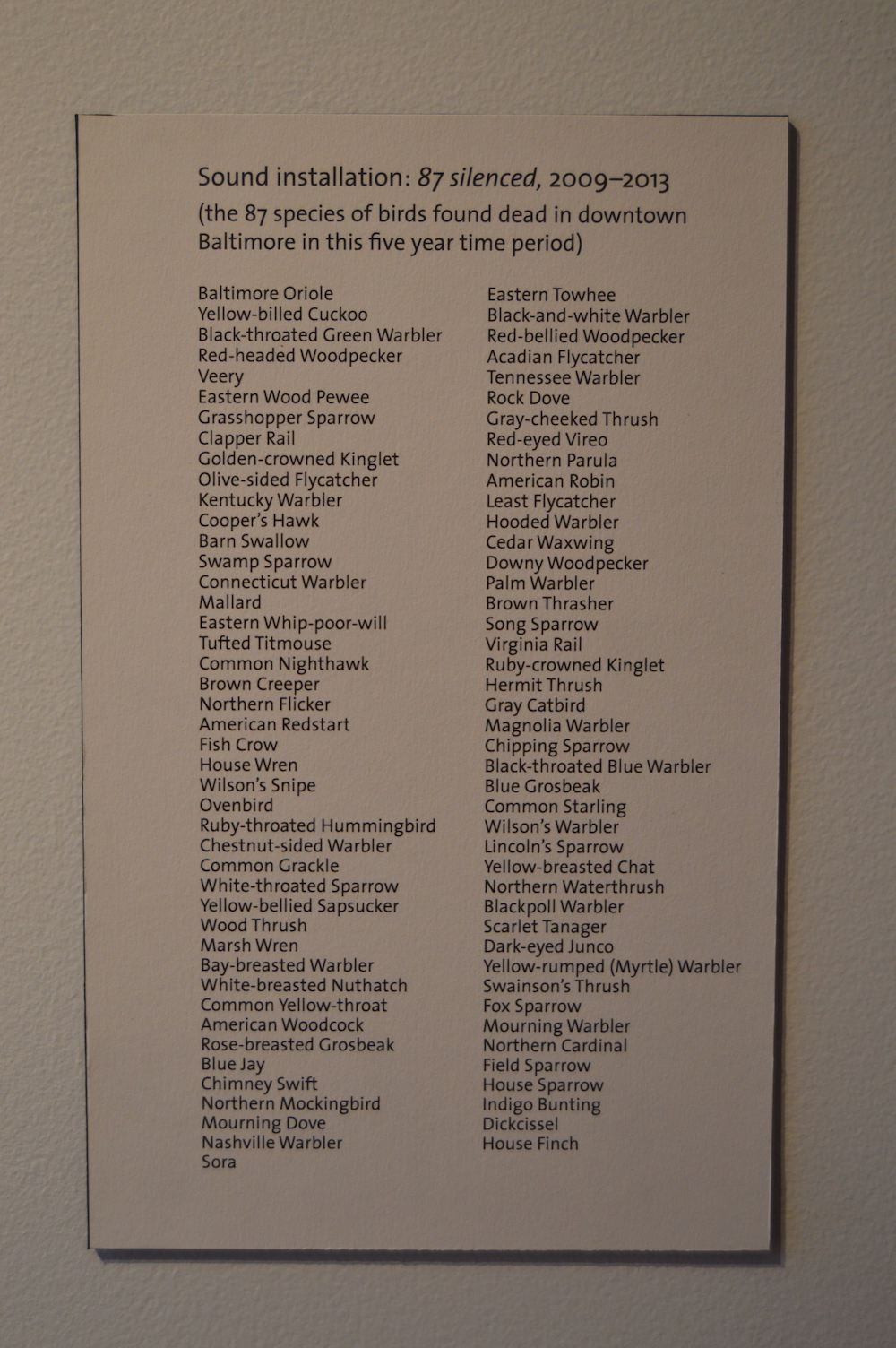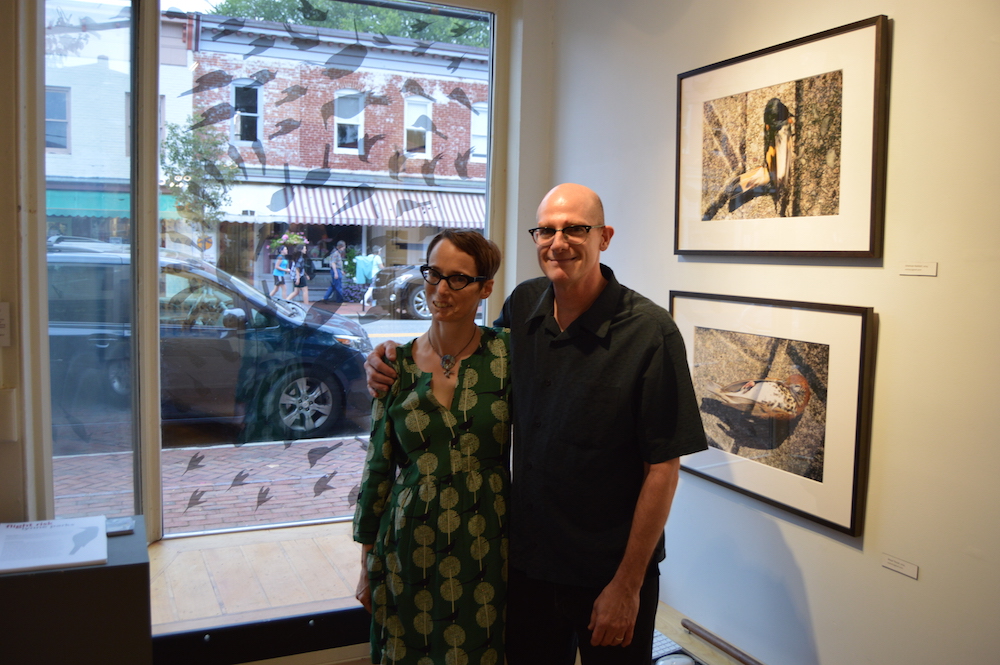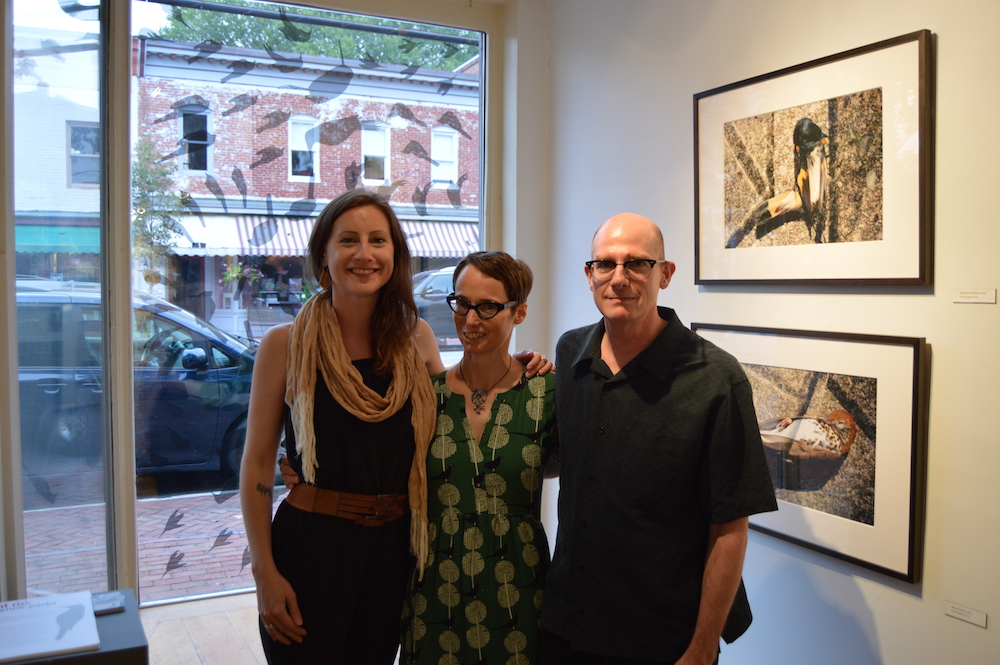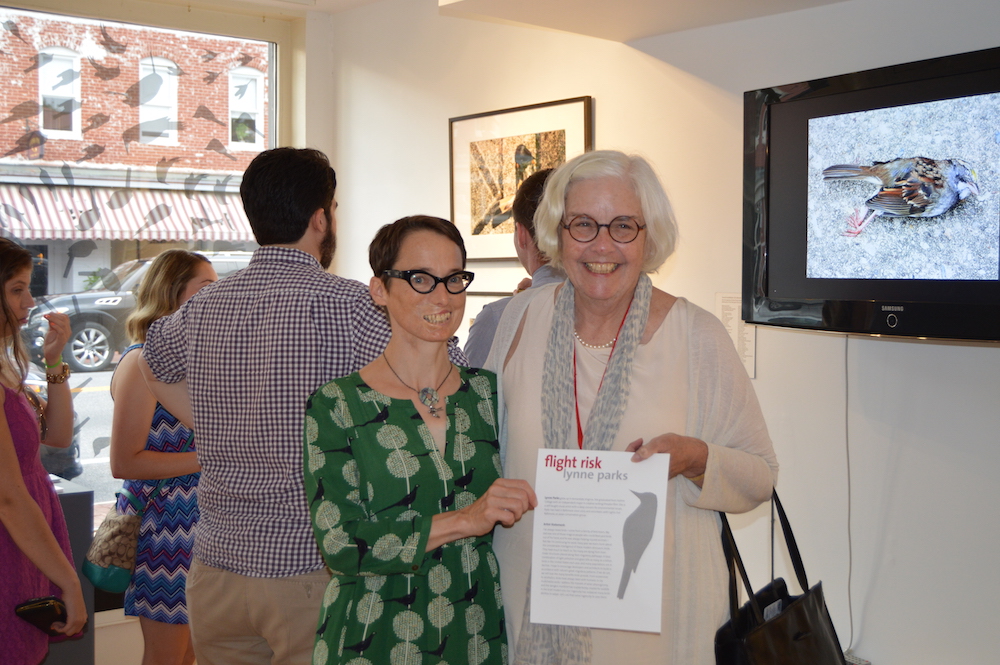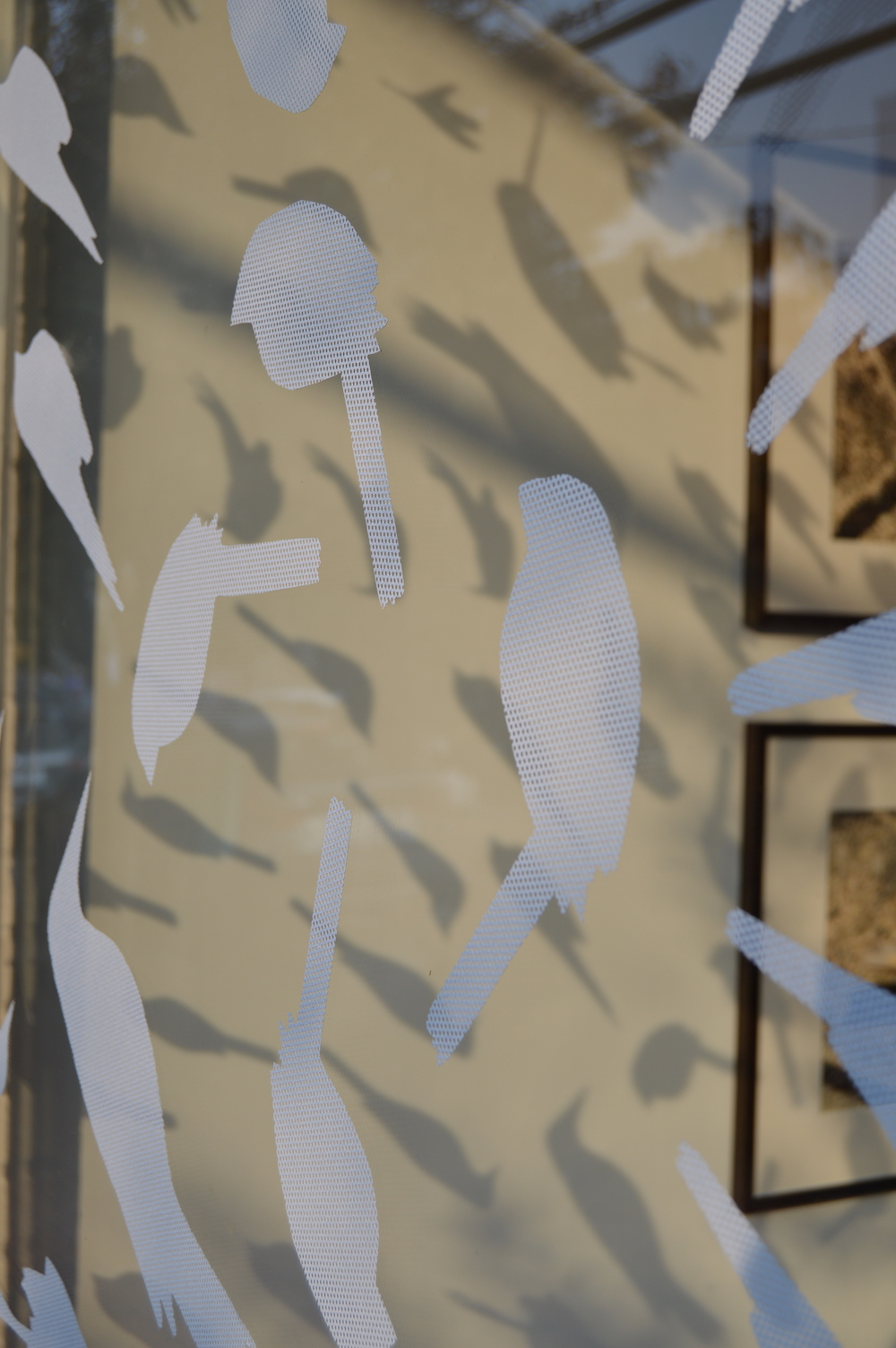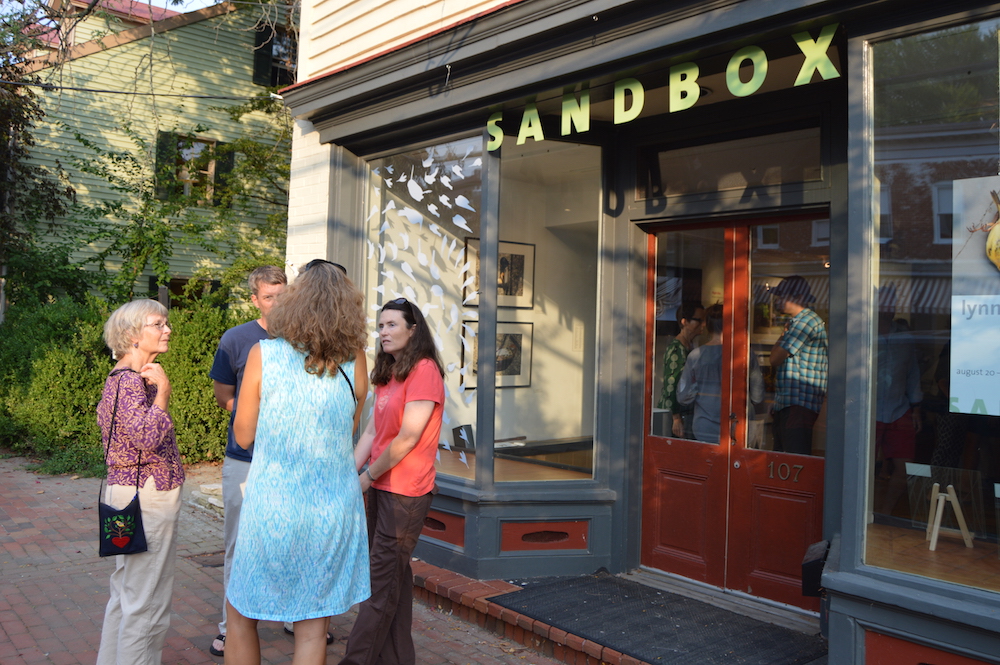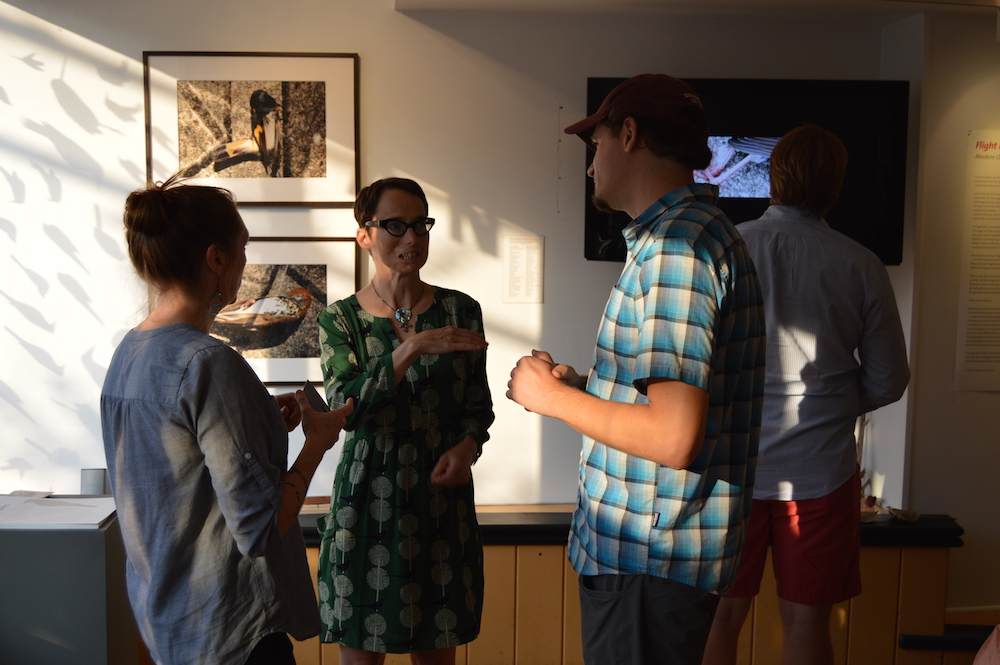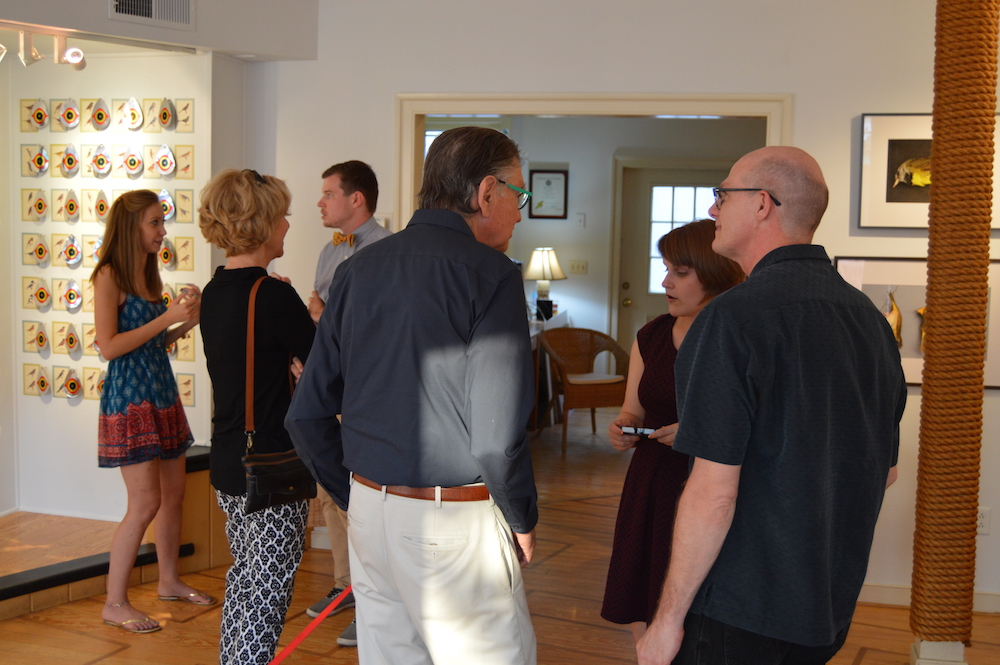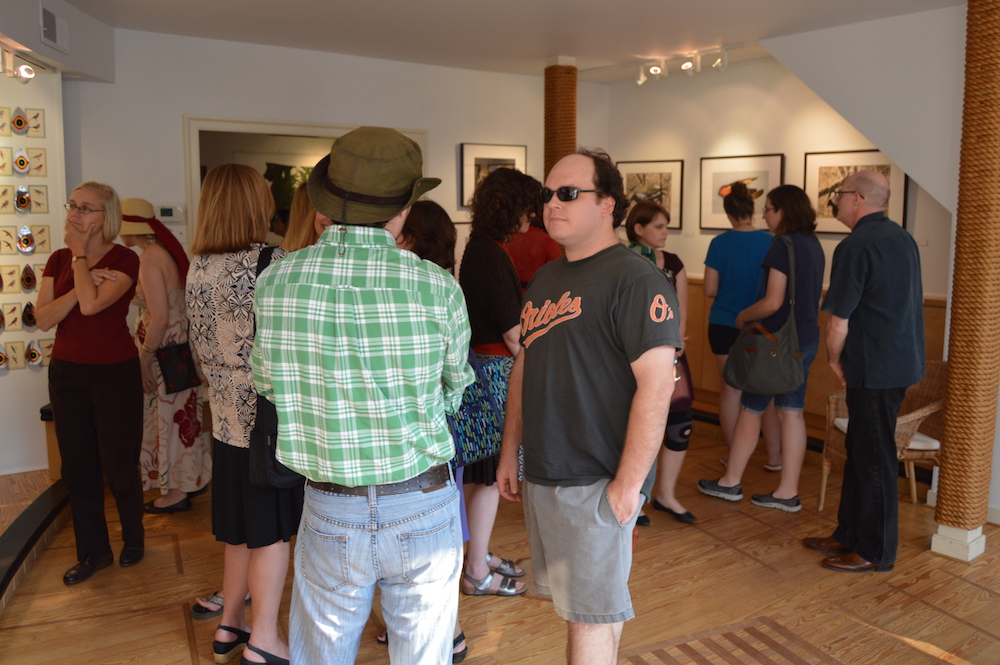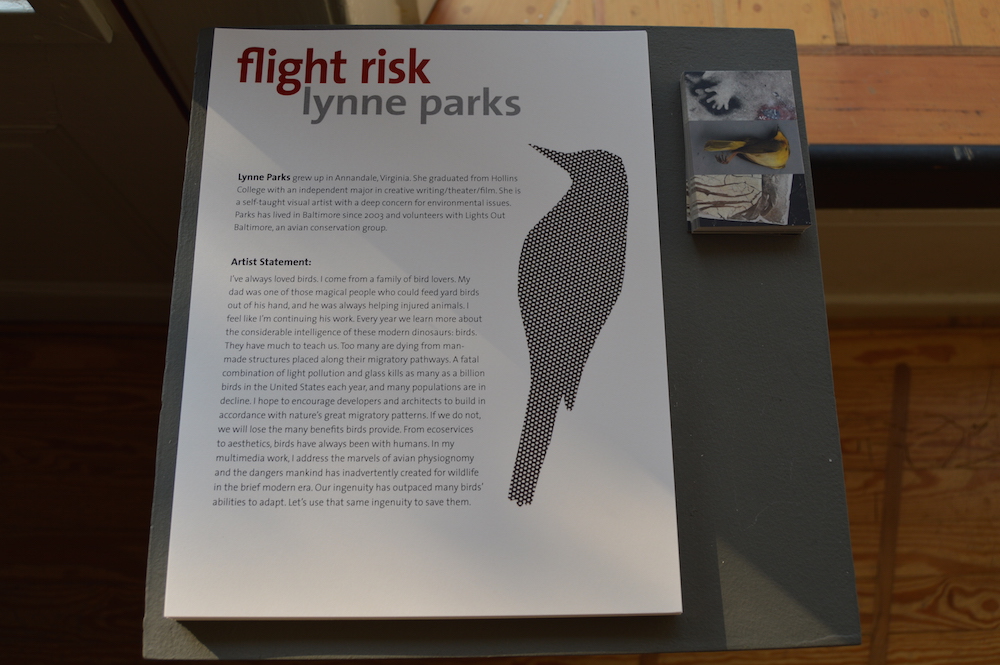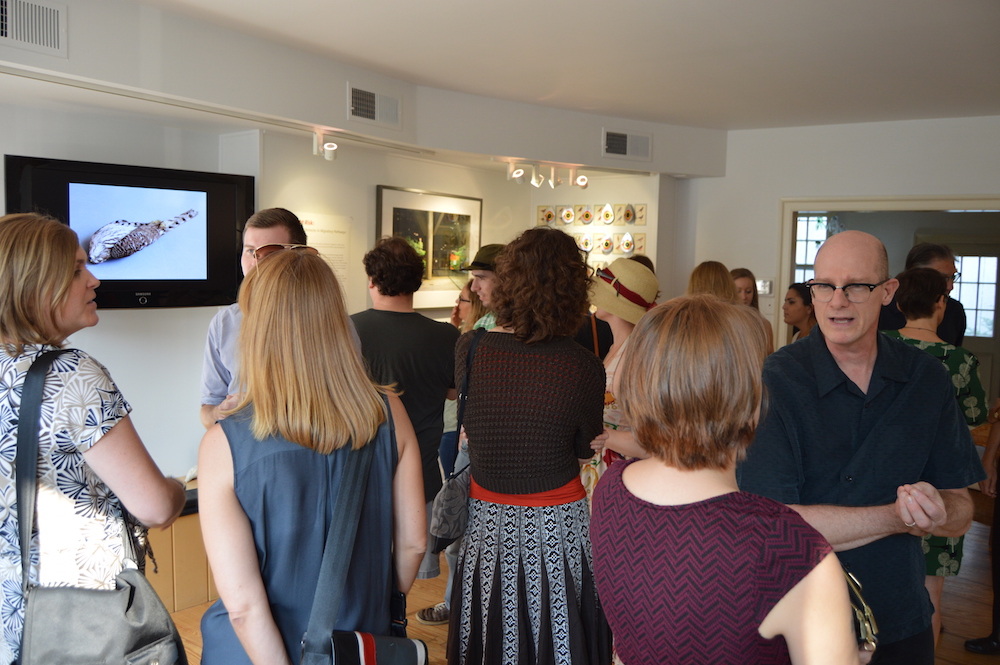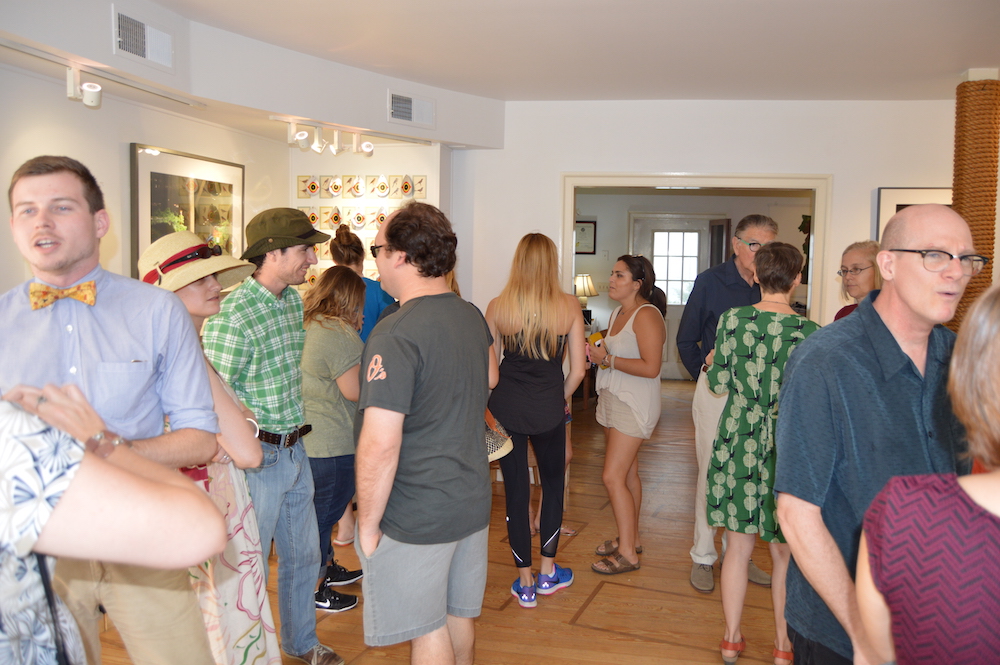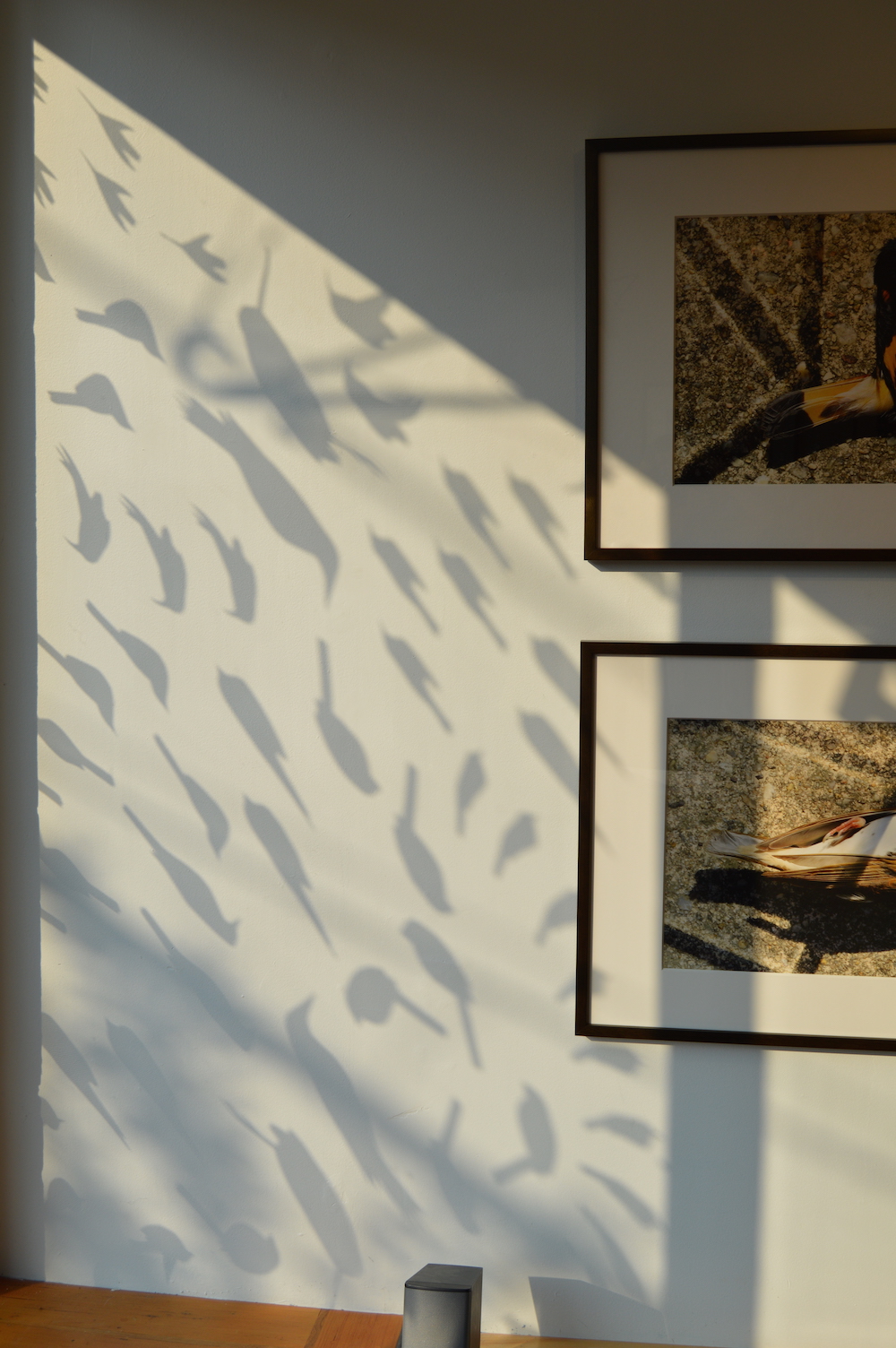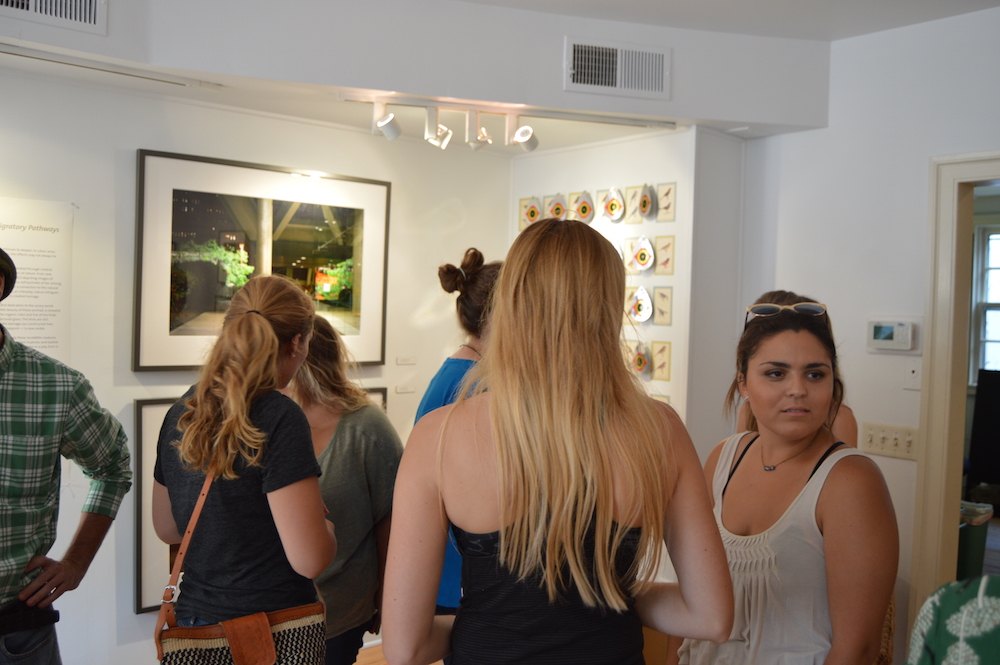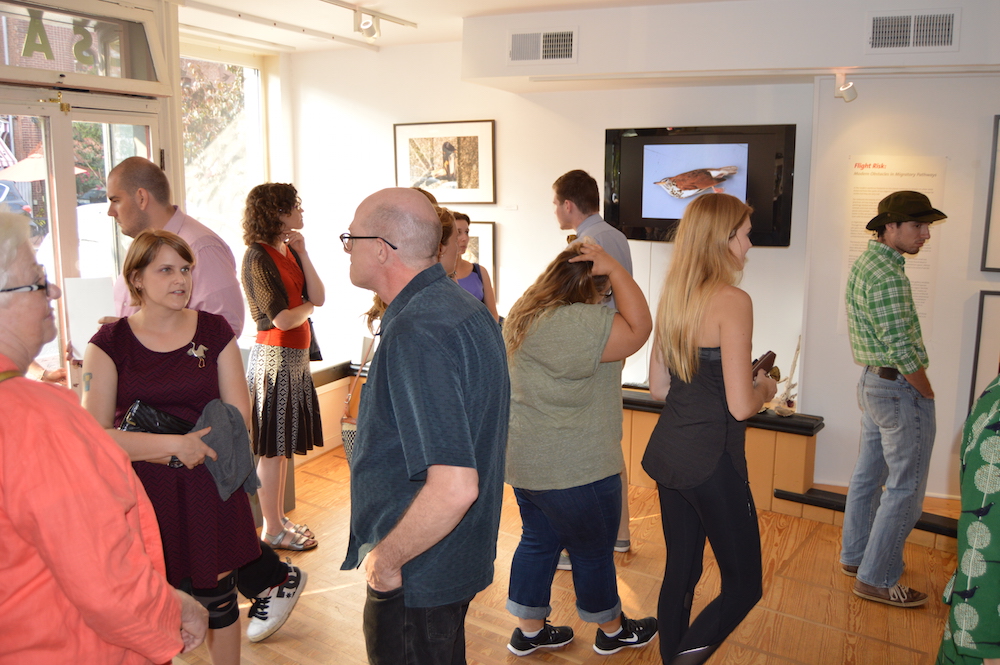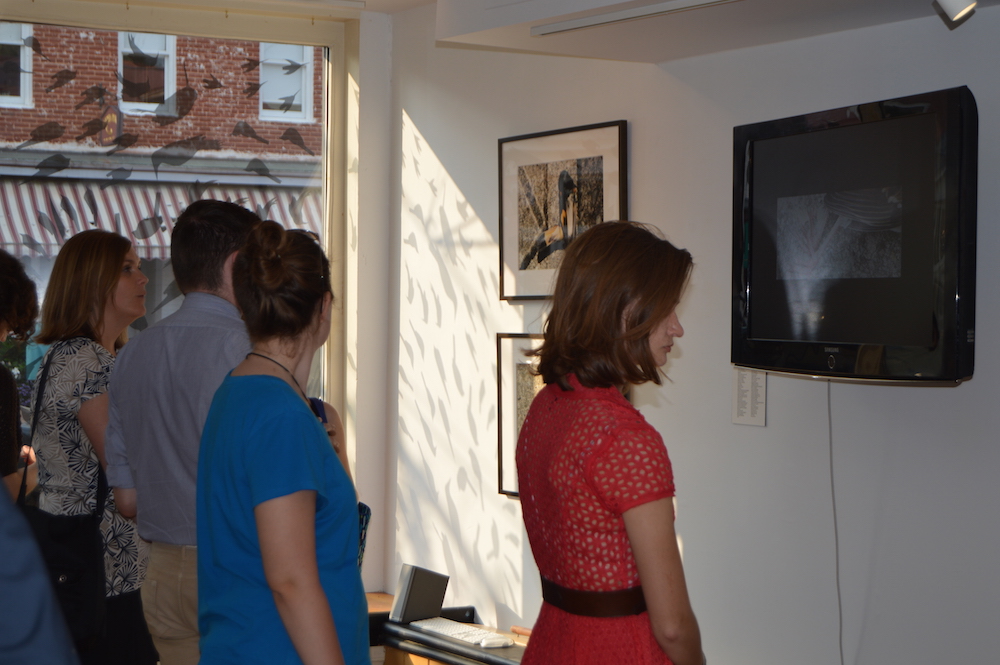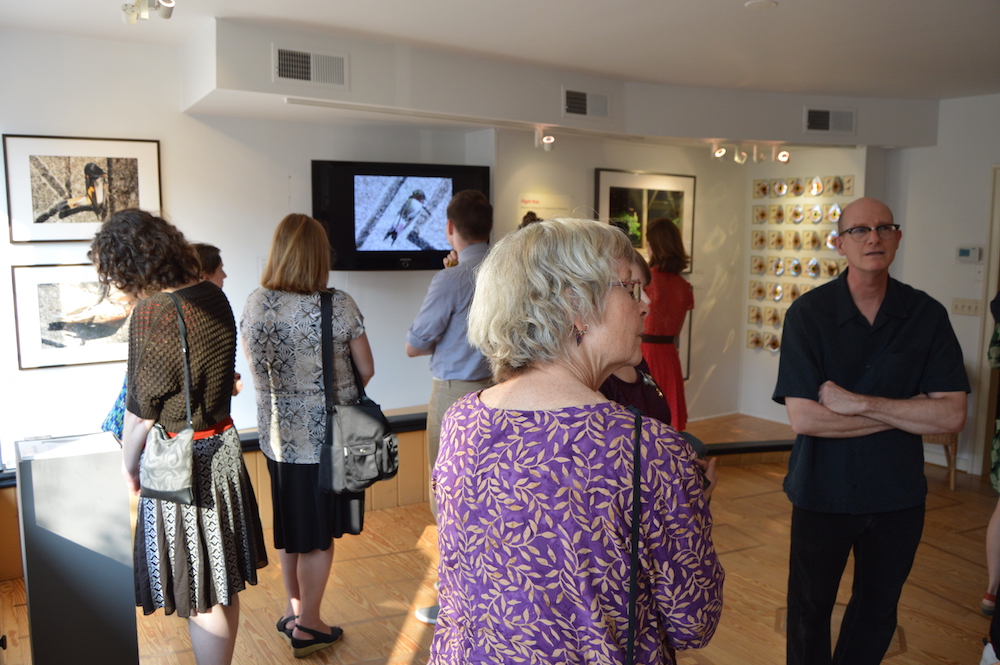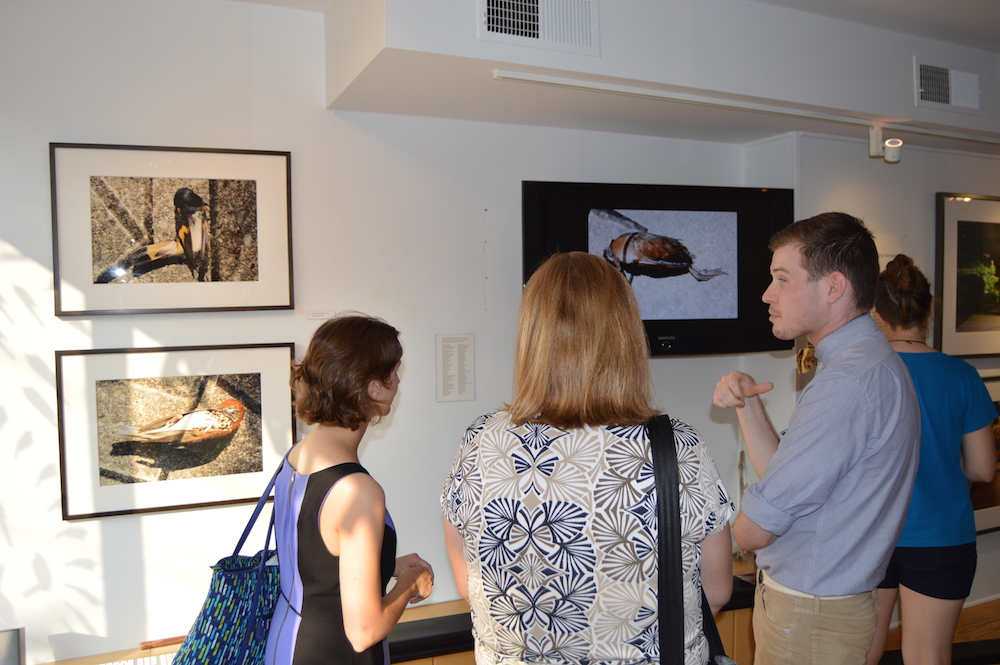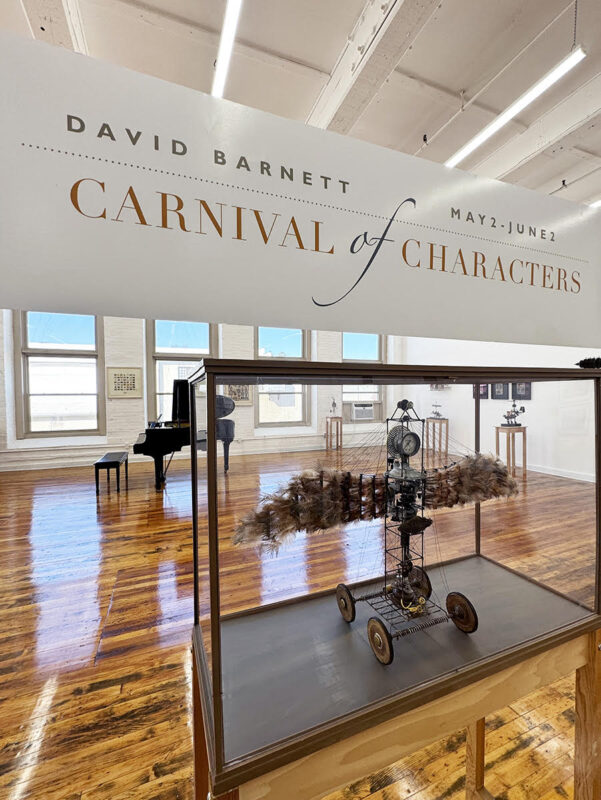Lynn Parks: Flight Risk is at The Sandbox in Chestertown, MD
Modern Obstacles in Migratory Pathways: In “Flight Risk“, Lynne Parks displays her passion for and dedication to the avian world. Through her meticulous, mindful craft, the incredible beauty of these animals is revealed, yet upon closer inspection there lies a narrative. The organic color and line of the birds’ feathers is among lines of light formed by manufactured glass. The birds are still, lifeless. Parks confronts us with documentation of the damage our constructed lives unintentionally leave in their wake. Our mark — our footprint — is now visible.
Curated by Marnie Benney
Exhibition ran August 20 – September 18, 2015 at the The SBX gallery
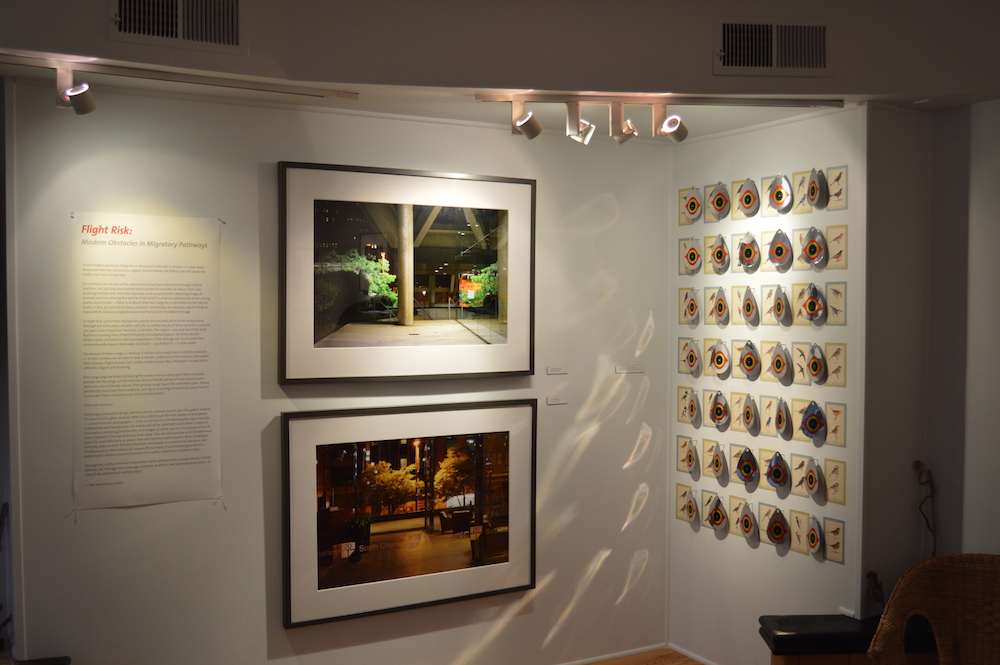
Curatorial Statement:
In the modern world our footprint on the planet continues to deepen. In urban areas distanced from the cycles of our organic environments, the effects may not always be visible, but they are very real.
For centuries the beauty of the natural world has been celebrated through creative practices. Art has long documented and inspired the wonders of nature. From cave paintings etched onto rock that date back as far as 40,000 BCE depicting images of animals and man sharing the land, to Frida Kahlo’s numerous self-portraits of her among plants and animals — there is no doubt that man longs for a connection to the natural world. In this, art and nature have a symbolic relationship, an interplay: nature intrigues man with its elusive complexities and man honors her in creative homage.
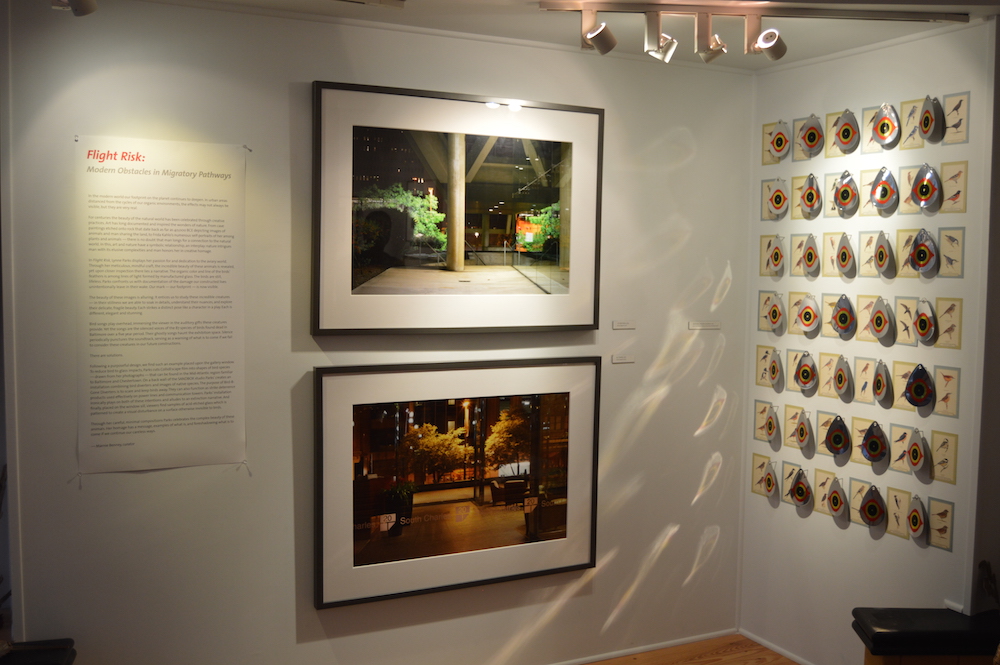
In Flight Risk, Lynne Parks displays her passion for and dedication to the aviary world. Through her meticulous, mindful craft, the incredible beauty of these animals is revealed, yet upon closer inspection there lies a narrative. The organic color and line of the birds’ feathers is among lines of light formed by manufactured glass. The birds are still, lifeless. Parks confronts us with documentation of the damage our constructed lives unintentionally leave in their wake. Our mark — our footprint — is now visible.
The beauty of these images is alluring. It entices us to study these incredible creatures — in their stillness we are able to soak in details, understand their nuances, and explore their delicate, fragile beauty. Each strikes a distinct pose like a character in a play. Each is different, elegant and stunning.
Bird songs play overhead, immersing the viewer in the auditory gifts these creatures provide. Yet the songs are the silenced voices of the 87 species of birds found dead in Baltimore over a five year period. Their ghostly songs haunt the exhibition space. Silence periodically punctures the soundtrack, serving as a warning of what is to come if we fail to consider these creatures in our future constructions.
There are solutions.
Following a purposeful design, we find such an example placed upon the gallery window. To reduce bird to glass impacts, Parks cuts CollidEscape film into shapes of bird species
— drawn from her photographs — that can be found in the Mid-Atlantic region familiar to Baltimore and Chestertown. On a back wall of the SANDBOX studio Parks’ creates an installation combining bird diverters and images of native species. The purpose of Bird-B- Gone Diverters is to scare and keep birds away. They can also function as strike deterrence products used effectively on power lines and communication towers. Parks’ installation ironically plays on both of these intentions and alludes to an extinction narrative. And finally, placed on the window sill, viewers find samples of acid-etched glass which is patterned to create a visual disturbance on a surface otherwise invisible to birds.
Through her careful, minimal compositions Parks celebrates the complex beauty of these animals. Her homage has a message, examples of what is, and foreshadowing what is to come if we continue our careless ways.
— Marnie Benney, curator
